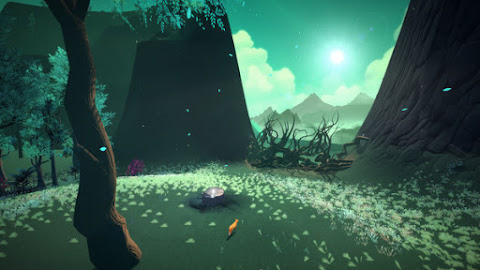Games
can be described by the 3 components Mechanics,
dynamics, and aesthetics (MDA) or
otherwise stated as rules – system – “fun”. The three reading
selections this week and the synopsis below all address the term “fun” in
relation to game design.
There are eight
types of Fun outlined by the MDA. These eight are both a source of reference
and player experience that blend together in many ways, and essentially what
makes a game fun and enjoyable.
To date, the MDA
papers define the '8 kinds of fun' sensation,
fantasy, narrative, challenge, fellowship, discovery, expression, and
submission, remain a source of
reference and possibly the most popular list of player interactions combining
in various forms to attract each player to a particular game.
“Fun is a byproduct of good design. It is also
not essential for a good gamified system,” by Andrzej Marchewski
There
are a variety of definitions to describe the term “Fun”. Both Oxford and
Merriam dictionaries define Fun as an enjoyment, delight. But within the
context of a game it usually refers to a form of pleasurable entertainment.
Nicole Lazzaro conducted a
study in 2004 which resulted in the “4 Keys to Fun: the game mechanics that
drive play”. These keys are based on the players emotions during gameplay which
involved in defining how
fun a game can be for different
players. The first key (Easy
Fun) gives the player an opportunity to explore the game, It isn’t demanding in terms of challenge and
it relaxes the player. The second key (Hard fun) comes with a challenge and
it’s when the player gets put in difficult situations which results in achievement.
The next key is (People fun) is a multiplayer experience resulting in
competition and participation. The last key (Serious Fun) is when the player
has the freedom to change the world around them and their character.

The Concept of Flow is characterized as a balance between
skill-challenge and the individual's enjoyment. When in flow the player is
focused on the activity they are participating in. This gives a sense of reward
and promotes further engagement in the activity.
Flow theory provides a good framework for
analyzing motivation in gaming activities, in particular enjoyment, engagement
and positive affect.
Figure 3: Graph showing the flow zone, where the game is not too easy where the players abilities are very high (Boredom), but also not too hard that the player is unable to complete the challenge (anxiety).
Theory of fun in game design is
book written by Raph Koster in which he talks about how fun in games can give
room for a large space for learning within the players involved. “Fun
is the feedback the brain gives us when we are absorbing patterns for learning
purposes.” – Raph Koster. Here Koster talks about the human’s ability
to memorize and recognize a large array of patterns which can then be
implemented in games. When our brain learns from a situation in the game
whether it’s solving a puzzle or completing a quest, our brain recognizes this
and dopamine is released signifying our fun in games.
There
is a common thread in which many overlook games on the basis of just fun and
entertainment. However, different games can teach us different things. Games
can also be sectioned into different types depending on what they teach. For
instance, Koster mentions Type 1 Games which require thinking, analysis and
strategy techniques e.g Chess or Civilization. Type 2 Games refer to “reflex based skills” in games like shooters that
require “sharp reflexes” and in fighter games that require “combo memorization
and the execution”.
“The gap between
those who want games to entertain and those who want games to be art, does not
exist.”
Koster
concludes that by understanding how fun works in games, it will also lead to
understanding of how fun is achieved in the creation of a game. This, in turn
allows us to reflect and learn from our experience of the game.
Games
help people to become more imaginative, engaging with their creative side of
the brain and creating new ideas/designs that can be implemented in games. Being more creative when developing your game will help you see what challenges the player may face and what ones will help further improve the progression and also add to the player's determination to complete the story.
References:
Velev, A., 2016. Gamification Design: What’S Fun Got To Do With It?. [online] Megamification. Available at:<http://www.megamification.com/727-2//> [Accessed 16 November 2020].
Kaye, L. and Bryce, J., 2012. Putting The “Fun Factor” Into Gaming: The
Influence Of Social Contexts On Experiences Of Playing Video Games. Available at: <https://core.ac.uk/download/pdf/9632557.pdf/> [Accessed 16 November 2020].
The Game Overanalyser., 2020. A Theory of Fun for Game
Design | Raph Koster and The Art of Designing Fun Games. Available at: <https://www.youtube.com/watch?v=6sZJYA06z7Y&feature=emb_logo&ab_channel=TheGameOveranalyser/> [Accessed 16 November 2020].























